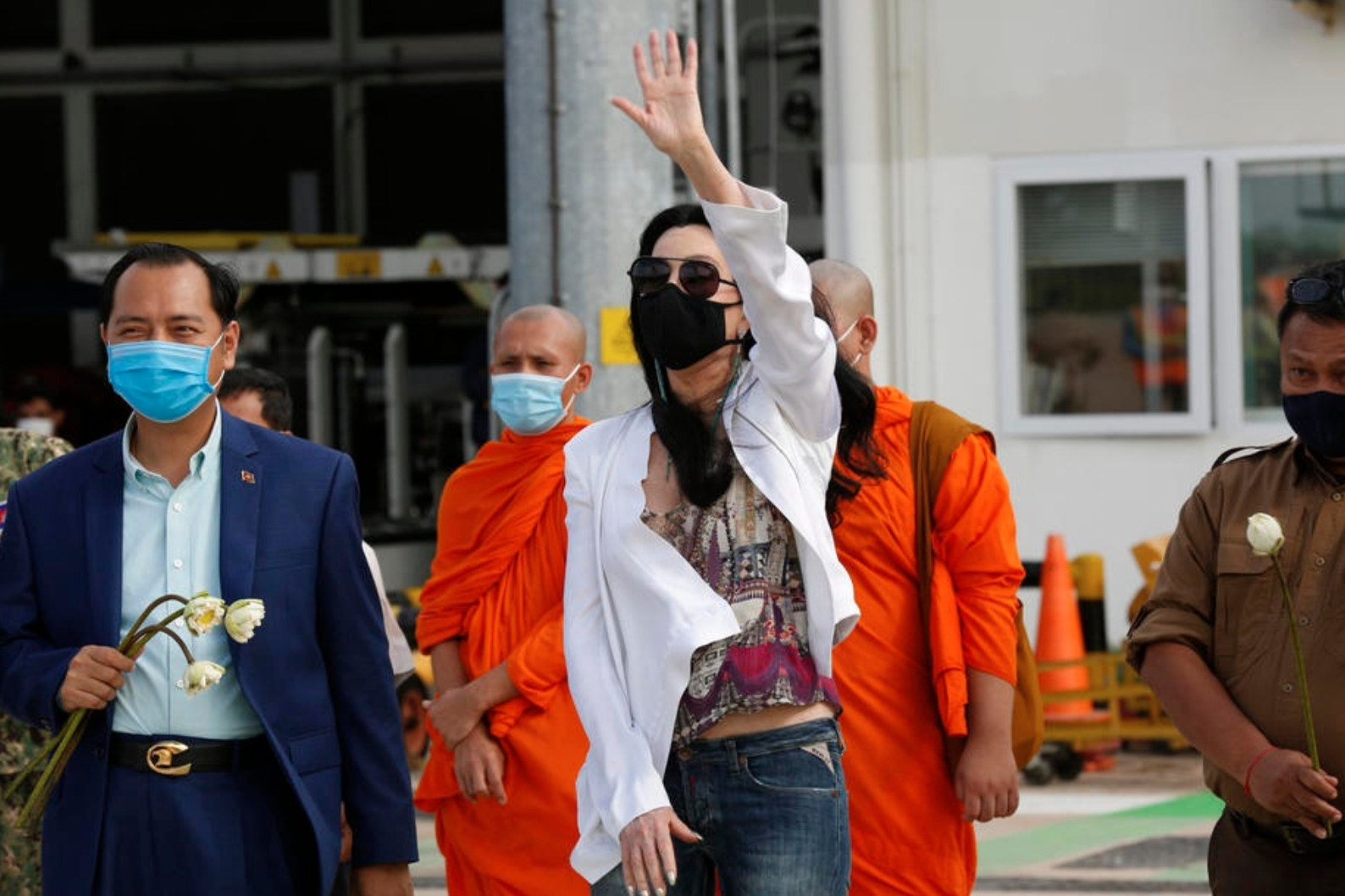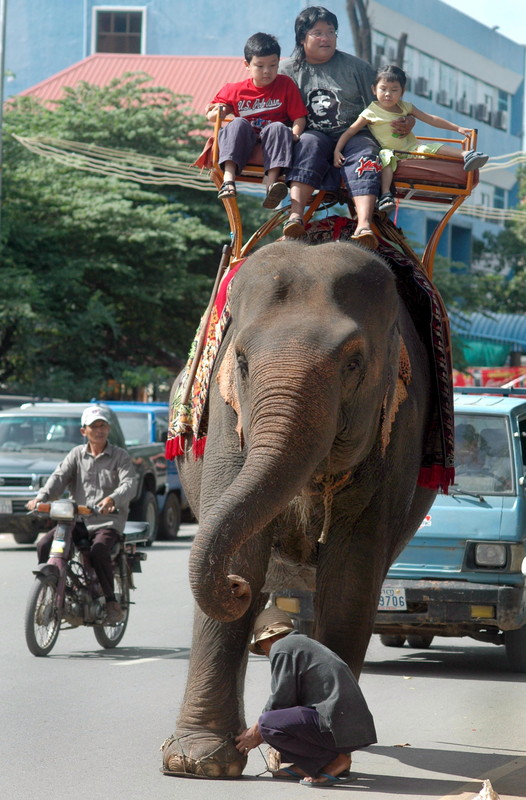Cambodia’s Angkor Wat temple was built in the 12th century with the help of 6,000 elephants, with carvings of the animals on the temple’s walls still paying homage to their great labour centuries on. And as with the temple’s edifice, elephants seem to be etched into the world’s popular imagination.
This imagination was recently stoked by the plight of Kavaan, the ‘world’s loneliest elephant’, as he moved from Pakistan to Cambodia. The story became a global sensation when pop icon Cher fronted the campaign to relocate the 36-year-old Asian elephant from a dilapidated zoo in Islamabad to a wildlife sanctuary in the home province of Angkor Wat, Siem Reap.
But not all captive elephants are as lucky as Kaavan.
Tourism has significantly bolstered the captive elephant industry in countries like Thailand, with millions of tourists visiting facilities throughout Southeast Asia each year prior to the pandemic. Elephants in the tourism industry are often captured from the wild, and forced to give rides to tourists while heavy wooden and metal saddles flatten their peaked backs.
But these places are increasingly mired in controversy, with concerns for captive elephant welfare changing the face of the industry – largely due to public awareness campaigns initiated by Western animal welfare organisations. Partly due to the effectiveness of these campaigns, activities such as elephant riding are becoming less popular, with some elephant businesses rebranding as sanctuaries and offering activities like elephant washing, which is perceived as less harmful than riding.
Rebuttals are commonly made that Western cultures cannot relate to the historical and religious relationship many Asian cultures harbour between elephants and humans. Elephant owners from the tourism industry largely consider outrage against elephant tourism to be an example of Westerners imposing their values on Asians while disregarding Asia’s history.
But though human-elephant relationships have existed in South and Southeast Asia for thousands of years, today this relationship is shaped by those who patronise and work in the elephant tourism industry. Romanticised notions of history are invoked to justify activities such as elephant riding, as well as the struggles of the industry’s often exploited mahouts – but is history a good enough reason for a life in captivity for the endangered Asian elephant?

History is most prominently used to justify elephant riding. Many proponents of elephant riding believe the activity is not inherently bad for the elephants, looking to the past as an important justification as people have been riding elephants for centuries.
In his book Elephants & Kings: An Environmental History, Thomas R. Trautmann chronicles the spread of war elephants from India to Southeast Asia in 1000 BCE. He argues that the relationship was based on domination, since kings wanted to demonstrate their all-encompassing supremacy by dominating the hard-to-control and awe-inspiringly big elephants. When elephants submitted to human domination, establishing a new form of hierarchy, the number of elephants a king held became a measure of his wealth and power.
This hierarchical model went on to permeate human society, reinforcing class distinctions that persist to this day. Trautmann refers to a Sanskrit inscription where a slave-owning man retiring as a hermit is compared to an elephant freed of their chains. While the inscription alludes to the freedom of elephants, implying that captivity is bad for them and freedom is aspirational, it also cavalierly mentions the man’s slaves without acknowledging the same for them, demonstrating the normalising of the class system.
The lauded human-elephant relationship ran parallel to a deeply entrenched class system in Southeast Asia, with the social inequality upon which the ancient human-elephant relationship was founded manifesting in the elephant tourism industry today.
Mahouts – traditional elephant keepers – play a crucial role in captive elephant welfare by taking care of the animal’s basic needs like feeding and washing. Historically, mahouts cared for war elephants, with Trautmann describing mahouts as lowly employees of the king even while their strategic importance in relation to elephants was acknowledged. Tourists tend to have romanticised notions of Mahouts: that they come from families where knowledge of elephant management is passed through generations, and that mahouts bond with one elephant for life. Yet these notions are only myths.
More than 50% of mahouts come from families that have never owned an elephant, and only 12% would want to pass their work along to their children. Many mahouts take the job because of a lack of other employment opportunities
Mahouts today continue to be systematically disenfranchised, generally belonging to lower classes and paid little for their work. These days, it is common for a captive elephant to have three to four mahouts in their lifetime. Dr Schmidt-Burbach, a vet with a PhD in elephant health and welfare, in 2015 assessed that more than 50% of mahouts come from families that have never owned an elephant, and only 12% would want to pass their work along to their children. Many mahouts take the job because of a lack of other employment opportunities, and don’t receive any comprehensive training – endangering the animal, themselves and tourists alike.
Disenfranchised mahouts represent Asia as much as the historical kings and the present-day elephant sanctuary owners – but their exploitation is often erased in a version of history that only sees the glory in the human-elephant relationships. Many individuals within Asia are in the elephant tourism industry for profit and have no qualms with underpaying mahouts or exploiting elephants. In talking about the history of human-elephant relationships in Asia, this exploitation of lower classes needs to be explicitly addressed.
In framing the conversation as Western values being imposed on the East, the class struggle present throughout history in Asian countries disappears under some vague notion of “the East”. The East vs West false dichotomy homogenises a complex continent and its history of human-elephant relationships that can be neither universally glorified nor condemned.

But the elephant industry can account for animal welfare, as well as the marginalisation caused by class politics, by coming up with holistic solutions for both humans and elephants.
Observation-only sanctuaries, often considered to be “real” sanctuaries, are considered more ethical in contrast to sanctuaries offering riding, washing and other hands-on activities. Some observation-only sanctuaries also collaborate with certain ethnic groups that have long standing relationships with elephants that are not descended from war elephants.
The Bunong indigenous people of Mondulkiri, Cambodia’s northeastern province, are an example of a marginalised indigenous group whose animist beliefs have always incorporated elephants into everyday life. While the relationship with war elephants was based on possession and strategic value, the Bunong consider the lives of elephants equal to humans.
The Elephant Valley Project (EVP) is one such observation-only sanctuary. Based in Mondulkiri, it employs Bunong mahouts and partners with the community to help them protect their ancestral land. Sanctuaries like EVP prove that it is possible to combine the principle of elephant welfare and taking cultural nuance into account with the practical business of running an NGO and an ethical elephant sanctuary.
“The community views the forest as their main resource; their supermarket and their church,” Jemma Bullock, the Project’s manager, told the Globe. “The elephants provide a strong connection to their animist spirit world, but also support them financially through sustainable ecotourism.”
Like most complicated issues, the elephant tourism industry has many shades of grey. Elephants have fascinated humans for thousands of years, but fascination does not need to turn into exploitation. The history of human-elephant relationships in Asia is not straightforward and cannot be a blanket justification for the tourism industry. Observation-only sanctuaries that partner with marginalised groups offer the best possible alternatives, providing tourism without imposing a severely lopsided power dynamic.
Ultimately, perhaps the best way to honour the past is to recognise it, and then leave it behind.
Sonakshi Srivastava is a writing fellow with Sentient Media where she focuses on the intersection between culture and animals. She has volunteered and worked with different animal welfare organisations in South Africa, Hong Kong and Cambodia. She can be reached on sonakshi.tav@gmail.com.


